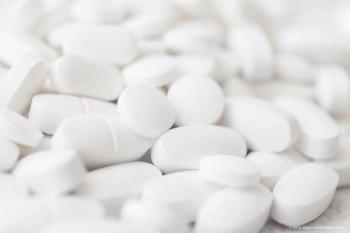
ASRS 2023: Health disparities in lapses in diabetic retinopathy care
Cindy Cai, MD, shared insights from her presentation from ASRS 2023, "Health disparities in lapses in diabetic retinopathy care," with Sheryl Stevenson, our Group Editorial Director.
Cindy Cai, MD, shared insights from her presentation from ASRS 2023, titled "Health disparities in lapses in diabetic retinopathy care," with Sheryl Stevenson, our Group Editorial Director.
Video Transcript
Editor's note - This transcript has been edited for clarity.
Sheryl Stevenson:
We're joined today by Dr Cindy Cai, who will be presenting at this year's ASRS meeting in Seattle. Welcome to you, Dr Cai.
Cindy Cai, MD:
Thanks, Sheryl.
Sheryl Stevenson:
We're really curious to hear more about your talk regarding health disparities in lapses in diabetic retinopathy care. That sounds like such a timely topic right now. Can you tell us more about your talk?
Cindy Cai, MD:
Yeah, thanks so much for that question. As you know, Sheryl, diabetic retinopathy is the ophthalmic manifestation of diabetes. Even though we have great preventive strategies and treatments for diabetic retinopathy, it's still the leading cause of blindness among the working age adults in the US. That's because a lot of times our patients with diabetes aren't returning to eye care as recommended by their provider, [and] they have what we call a lapse in their diabetic retinopathy care.
So in our study, we looked to see whether there were differences in rates and lapses in diabetic retinopathy care by different racial and ethnic groups. We included about 40,000 patients with diabetes who had come through the Wilmer Eye Institute for diabetic retinopathy screening or treatment, and found that overall, about three-quarters of patients have a lapse in diabetic retinopathy care at some point during the first 2 years of follow up. These rates were different by race and ethnic groups, whereby our non-Hispanic black patients and Hispanic patients had a much higher chance for having a lapse in diabetic retinopathy care as compared to otherwise similar non-Hispanic white patients. This was a statistically significant finding, and obviously very important.
Of course, identifying these health disparities by race and ethnicity is just the first step. Ultimately, we want to develop interventions and strategies to eliminate the health disparities that we're seeing. So, we're in the process of taking this methodology that we've developed to identify lapses in diabetic retinopathy care, and deploying it in real time in our electronic health record, so that we can identify lapses in care as they're happening and provide additional resources for patients who might need the most support. So, this is ongoing work and I encourage everyone to stay tuned.
Newsletter
Get the essential updates shaping the future of pharma manufacturing and compliance—subscribe today to Pharmaceutical Technology and never miss a breakthrough.













































